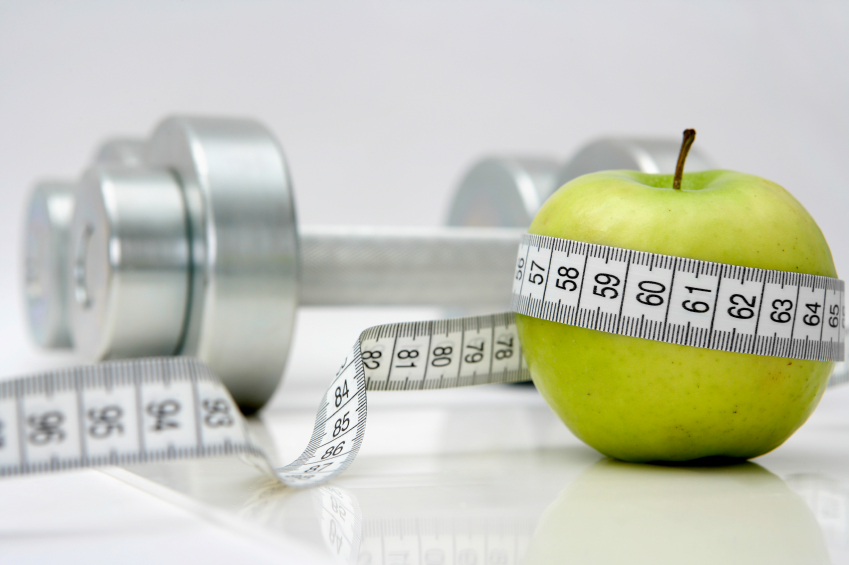Top 10 Weight-Loss Myths, Debunked!
- Published: Wednesday, February 13th 2013
- in Fitness
By Andrew Wolf, M.S. ED., exercise physiologist, Miraval Resort & Spa
Corpulence, or portliness, was once a sign of wealth and position but years of changing tastes and startling new information about the risks of a generous waist line have conspired to create a premium on thinness. The problem with us as humans is that it is not in our nature to be thin by choice. Over millennia of human evolution, the individuals that could eat beyond the point of satiety were the ones who made it through the lean times and here we are, able to and programmed to eat beyond what we need. Couple our human nature with a desire to be thin and a little misinformation, and viola, you have weight-loss myths that muddy the waters and hold back real progress for many.
Here are 10 big common misconceptions about weight loss, and the answers once and for all.
Myth #1: Are there certain exercises that target my trouble spots?
I probably get asked this question two to four times a week here at Miraval. The answer is an emphatic no. We all have what I call a “fat hierarchy.” When we gain weight, we put it on in an orderly, genetically determined way, and when we take it off, it does that in reverse (i.e. if you see weight gain in your face first, you’ll likely lose it there last). This order is part of who you are and cannot be up-ended.
Myth #2: I should be able to lose at least two pounds a week.
I always want my clients to remember that a pound of human body fat is the size of a really big orange or a small grapefruit; no small change! I also want them to remember that to lose a pound a week you have to be 500 calories in the hole per day. To lose two pounds per week you have to be 1000 calories in the hole per day. For a 5’4” woman who has a RMR of 1300 calories per day and who burns 300 calories per day going to work and living, something amazing would have to happen. She would have to eat a measly 600 calories per day to lose two pounds per week, which might work for a week or two but is NOT sustainable!
Myth #3: Running is the best calorie burner and swimming is the worst.
The key to starting an exercise program and staying started is picking a movement that does not hurt. Whether your heart rate gets up to 130 beats per minute running, walking on an incline, cycling, ellipsing, etc. it is all the same workout. Do what feels good to you.
Myth #4: I have to cross-train because my body will get accustomed to doing the same exercise.
If this was true, then Olympic caliber runners would have problems with weight. While your appetite can certainly catch up with the exercise you do (think the famous Michael Phelps 12,000 calories per day quote), your body does not get used to certain exercises. Do the exercises you like and the exercises that don’t hurt. Do them well and the calories will continue to burn.
Myth #5: If I have an ample muffin top or a larger-than-life caboose, it means my resting metabolic rate (RMR) needs to be sped up.
Metabolic rate generally declines very gently as we age but this is pretty normal. When I performed resting metabolic rate testing, the one thing I remember was the disappointment on the faces of people when I told them that there RMR was normal. They expected me to tell them that they had an incredibly slow RMR and that I had the secret formula to spice it up. Your RMR is finely tuned to how big you are; bigger people have higher RMRs and smaller people have lower RMRs. Maintaining muscle mass as you get older helps blunt the loss in RMR with age but the notion that we need to speed up our RMR is not usually the answer.
Myth #6: The calorie counts on the machines can be trusted.
As a rule, the calorie counts on the various pieces of cardio equipment range from “off by a little bit” to “pure fantasy.” When you work out, do not base your eating on what the machines at the gym say you burned. Use the calorie counters as a way to measure progress, but take the actual number with a grain of salt. If 40 minutes at 140 beats per minute used to burn 250 calories and 4 months later it burns 310 calories then you are better but leave it at that.
Myth #7: The fat burning zone is essential for weight loss.
The percentage of fat calories burned goes up as you slow down but as you slow down, you burn fewer calories. When it comes to weight loss, don’t worry about burning fat. If you are in a caloric deficit at the end of 24 hours, you will lose weight no matter what you burned.
Myth #8: If you go anaerobic, you will burn muscle.
Powering movement by burning muscle is a last resort for a desperate body. This is the kind of thing that happens on a three-plus-hour bike ride when you forgot to bring food. In the context of a 30- to 90-minute gym workout, this is not going to happen. Go hard and burn more calories.
Myth #9: Certain exercises make long lean muscles.
A long lean muscle is a small muscle that has very little fat covering it. You cannot make a muscle longer without making the limb in question longer. Get the body fat down first, then worry about sculpting your muscles.
Myth #10: It is important to target heart rates based on your age.
In my thirteen years working as an exercise physiologist, I have never used the 220-minus-age formula. My dad is a great example why: He is 70 years and should have a maximal heart rate of 150 beats per minute, but his real heart rate max is above 190 beats per minute. This is why I put almost all of my clients on a treadmill and test heart rate zones instead of using the formula.
Want to learn more about yourselfDevelop a snapshot of your fitness routine to take home with you with an Optimal Fitness Diagnostic Private Session at Miraval. Wolf will write an exercise prescription for you with the data collected on maximum heart rate, aerobic capacity, blood pressure, exercise history, medical history, and lifestyle. On your next visit to Miraval, Wolf compares new fitness levels with the data collected on your previous visit to give you the best results.
Earning his master’s degree at the Human Performance Lab UT Austin, Andrew Wolf specializes in exercise performance enhancement as well as diabetes treatment and prevention through enhanced metabolic function. Wolf’s expertise can help guests gain a deeper understanding on how their fitness levels may be impeding or aiding in the prevention of some of today’s most common and preventable diseases



